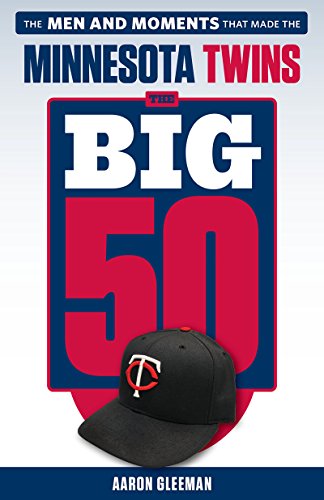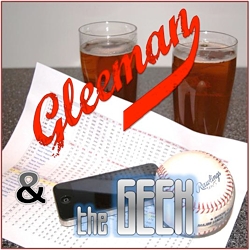Minor-League Notes (Hitters)
Denard Span kicked off his season in style by homering on Opening Day, which caused me to write the following:
The homer is particularly good news for Span, because while he is considered a very good defensive outfielder with a ton of speed and good on-base skills, he hit a grand total of one homer in 453 at-bats last season.
Unfortunately, Span has gone homerless in the 24 games since then and now sports the following season totals at Double-A New Britain:
G AB AVG OBP SLG HR XBH BB SO
25 104 .317 .372 .375 1 4 9 17
Those are solid numbers for a speedy 22-year-old center fielder, but any optimism surrounding Span's potential power development was clearly a false alarm. Span entered this year as a .289/.370/.344 career hitter in 236 minor-league games, so his performance at Double-A thus far is basically right in line with that. The lack of power is Span's most obvious flaw, but over the long haul the more damning thing is his lack of strike-zone control.
When you have almost zero power, the key to becoming a quality hitter is getting on base. A big part of that is drawing walks, but because pitchers aren't going to pitch around a guy who goes deep once a year you have to make outstanding contact to fight off tough pitches and work long counts. This is how Luis Castillo walks 60-70 times per season and gets on base at a .375 clip despite the fact that no one is afraid to throw him strikes.
The same is true for guys like Dave Roberts and Juan Pierre, left handed-hitting center fielders who are better comps for Span than the switch-hitting Castillo is (especially since Castillo has plenty of power from the right side). Span has been able to draw a fair number of walks in the minors, but that he's struck out in 16 percent of his at-bats at Double-A over the past two seasons is not a great sign (although Roberts struck out at a similar rate in the minors).
While Span's numbers are nice, the guy at Double-A whose early-season performance I'm really happy about is Matt Moses. Moses has had an up-and-down career since being taken with the 21st overall pick in the 2003 draft and hit just .210/.275/.366 in 48 games at Double-A last season. Here are his numbers there so far this year:
G AB AVG OBP SLG HR XBH BB SO
23 88 .341 .398 .534 4 9 9 18
As with Span, I'd like to see Moses walk a bit more and strike out a bit less, but in his case the more important thing is that he's hitting .341 with power. Moses entered this season as a .271/.337/.415 career hitter in 169 minor-league games, with just 16 homers and 56 total extra-base hits in 632 at-bats. This year he already has four homers and five doubles in 88 at-bats--good for a .193 Isolated Power from a 21-year-old in a pitcher's league.
If the Twins ever hope to assemble a quality lineup without bringing in a power hitter from outside the organization, Moses and Jason Kubel are huge keys. Both guys have the potential to be middle-of-the-order hitters, but both also have major question marks at this point. If Moses can continue to hit like this while remaining at third base (he has eight errors already), he's got a good chance of starting for the Twins next spring.
Speaking of Kubel, he got off to a hot start after the Twins demoted him to Triple-A, but has cooled down considerably since then:
G AB AVG OBP SLG HR XBH BB SO
15 62 .274 .343 .403 1 5 7 12
Those certainly aren't bad numbers, particularly for a guy coming off a lost season, but they jive with my opinion that the Twins shouldn't have taken Kubel north with the team in the first place. Kubel is striking out more often than in the past, his batting average is merely good and fairly empty, and he's been Rochester's designated hitter a lot. In other words, he's still got some things to work on despite the fact that a few good games near the tail end of spring training convinced the Twins otherwise.
Alex Romero began the season at Triple-A, but after hitting .192 in eight games was sent back to Double-A. I haven't seen an official explanation for the move, but it's an odd one given that Romero has nothing left to prove at New Britain. He made the Eastern League All-Star team, hitting .301/.354/.458 with 15 homers and 48 total extra-base hits in 139 games last year. Predictably, he's doing well there again:
G AB AVG OBP SLG HR XBH BB SO
12 46 .304 .418 .478 1 5 9 5
What good does it do to send Romero back to a level he's already conquered, particularly at the expense of his confidence and Triple-A experience? Given their penchant for jerking around young position players and the fact that eight games of poor hitting at a new level certainly doesn't warrant a demotion, I'm hopeful that the Twins haven't soured on Romero. He's one of the team's best and most underrated prospects, and this isn't an organization that can afford to give up on guys who can hit.
Like Kubel, Jason Bartlett got off to a great start after being demoted to Triple-A, but has since cooled down:
G AB AVG OBP SLG HR XBH BB SO
26 107 .290 .313 .439 1 13 5 12
Those are decent numbers and I'm pleased to see all the extra-base hits, but like Michael Restovich before him Bartlett appears to be stagnating in his third season at Triple-A. That's not an uncommon occurrence for a prospect who is asked to play at the same place for three years running while his 20s waste away, and like Restovich it looks as though Bartlett's plate discipline is the first thing to erode.
When what you've been doing is deemed not good enough and you can see your prime years being squandered, it's not surprising that patience at the plate goes right out the window. Restovich and perhaps now Bartlett are reminders that prospects aren't like bottled water or tomato sauce--you can't just stash them away in the same place for years and then expect them to be just as good when you're finally ready for them.
Juan Castro continues to eat up outs in the majors and Bartlett continues to waste time in the minors, and the Twins' low-level middle-infield prospects have underwhelmed as well. Developing major league-quality shortstops and second basemen has been one of the Twins' major weaknesses over the past decade, which is why guys like Castro, Cristian Guzman, Luis Rivas, and Nick Punto have figured prominently in the team's plans.
The Twins tried to address the system's lack of middle-infield talent by drafting several of them in early rounds recently, but thus far none of them have impressed. The biggest disappointment in the group is Trevor Plouffe, the 2004 first-round pick who hit .223/.300/.345 at low Single-A last season. At high Single-A Fort Myers this year Plouffe is batting .232/.361/.283 with zero homers, five total extra-base hits, and 21 strikeouts in 27 games, although he has walked 18 times.
Paul Kelly and Drew Thompson, who were both taken out of high school in the second round last year, are hitting .273/.339/.382 and .229/.315/.344 respectively as the double-play combination at low Single-A Beloit. From Guzman and Rivas to Castro and the current crop of young middle infielders, the Twins appear to be stuck in a different era when it comes to evaluatating and developing shortstops and second basemen.
Somehow most other organizations are able to find guys who can play capable defense at an up-the-middle infield spot while also hitting with some power, yet the Twins draft, develop, and give regular playing time to punchless glovemen on an annual basis. All of which wouldn't be so bad if the team was getting big-time offense from the corner spots or had a ton of power-hitting prospects on the horizon, but obviously that's not the case either.
While he's about the furthest thing from a power-hitter, the one middle-infield prospect who has looked good this year is 21-year-old switch-hitter Alexi Casilla. Acquired from the Angels for J.C. Romero this winter, Casilla is Plouffe's double-play partner at Fort Myers and has put up the following numbers:
G AB AVG OBP SLG HR XBH BB SO
28 121 .322 .359 .438 0 11 6 14
Nothing extraordinary, but he's at least hitting for a good batting average, getting on base, and showing some gap power. Plus, Casilla has 10 stolen bases at a 77-percent clip. At this point Casilla looks like a potential Luis Rodriguez-style utility man with the ability to turn into a starter at either second base or shortstop if he can beef up the walk rate a bit. Not a bad return for a headcase middle reliever who was set to make $2.2 million and currently boasts a 7.71 ERA.
Josh Rabe is getting a lot of attention for his hot start at Triple-A, but it'd be smart to curb most of that enthusiasm. Rabe is a 27-year-old outfielder who came into this season as a .273/.345/.403 career hitter in 637 minor-league games and is playing his fourth straight season at Rochester. His .346 batting average is easy to take note of, but he has one measly homer in 27 games and has put up the following numbers at Triple-A over the past three years:
YEAR AVG OBP SLG IsoD IsoP
2003 .237 .301 .397 .064 .160
2004 .264 .333 .376 .069 .112
2005 .239 .313 .414 .074 .175
2006 .346 .417 .442 .071 .096
Rabe's Isolated Discipline is in line with his career numbers and his .096 Isolated Power means that he's actually hitting for significantly less power than in the past. In other words, unless he's suddenly become a .340 hitter after years of hitting in the low .200s, Rabe is going to come back down to earth once a few of those singles start finding gloves. He is no more of a prospect or long-term option in the Twins' outfield than Michael Ryan was, although the fans in Rochester surely aren't complaining.

